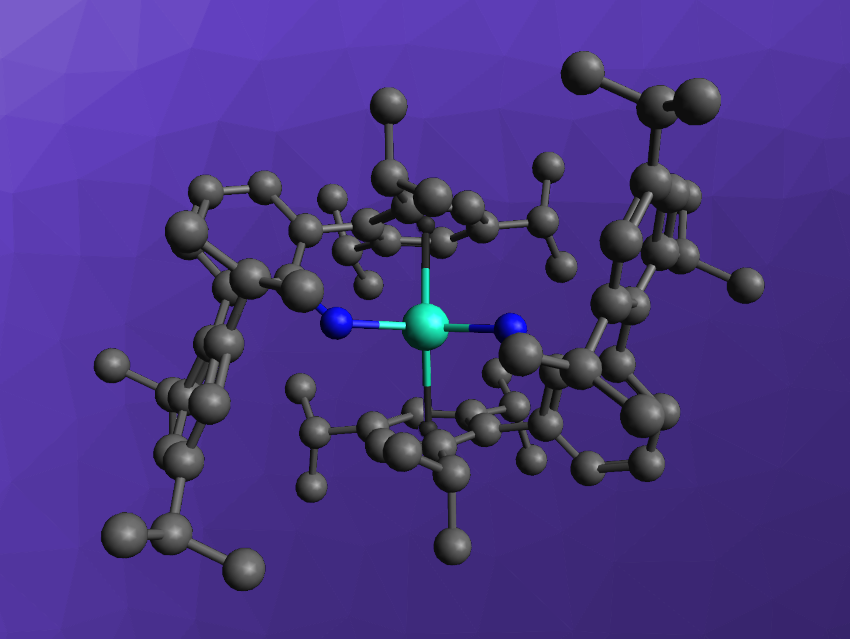Single-molecule magnets (SMMs) can exhibit magnetic bistability at the molecular level, making them promising, e.g., for high-density information storage. There is a variety of transition metal-based SMMs. Paramagnetic lanthanide ions are particularly promising because they have a magnetically anisotropic nature, and there are examples of both mono- and multinuclear SMMs based on lanthanide ions. Dysprosium(III) ions, in particular, can be used to construct complexes with interesting magnetic properties.
Aaron L. Odom, Selvan Demir, Michigan State University, East Lansing, USA, and colleagues have synthesized two mononuclear dysprosium(III) complexes that act as single-molecule magnets with magnetic hysteresis—a half-sandwich complex with one η6-coordinated arene unit and a sandwich complex with two (simplified structure of the latter pictured). The half-sandwich complex (NHAr*)2DyCl (Ar* = 2,6-(2,4,6-(iPr)3C6H2)C6H3) is neutral overall and has a chloride ligand. It was prepared from DyCl3 and two equivalents of the the potassium triarylamide KNHAr* in diethylether. In the resulting complex, one of the two triarylamide ligands is η6-coordinated to the dysprosium ion through an arene unit in addition to binding via its amide nitrogen, and the other only binds via the amide nitrogen.
The sandwich complex [(NHAr*)2Dy][BArF24] (BArF24− = tetrakis[3,5-bis(trifluoromethyl)phenyl]borate) was obtained from the half-sandwich complex via the removal of the chloride ligand as TlCl using Tl[BArF24]. In this complex, both ligands bind via their amide nitrogen and through an arene unit. Both complexes are single-molecule magnets with magnetic hysteresis.
According to the researchers, the magnetic hysteresis for the sandwich complex, in particular, breaks records for amide- or arene-stabilized SMMs in two ways. First, they observed magnetic hysteresis until a high magnetic blocking temperature TB of 19.0 K (the temperature below which the relaxation of the magnetization becomes slow). Second, the team found a very high maximum coercive field (a measure of the ability to withstand an external magnetic field without becoming demagnetized) of HC = 1.03 T. Overall, the work could provide useful insights for the design of mononuclear SMMs.
- Magnetic Hysteresis in a Dysprosium Bis(amide) Complex,
Florian Benner, Rashmi Jena, Aaron L. Odom, Selvan Demir,
J. Am. Chem. Soc. 2025.
https://doi.org/10.1021/jacs.4c08137




